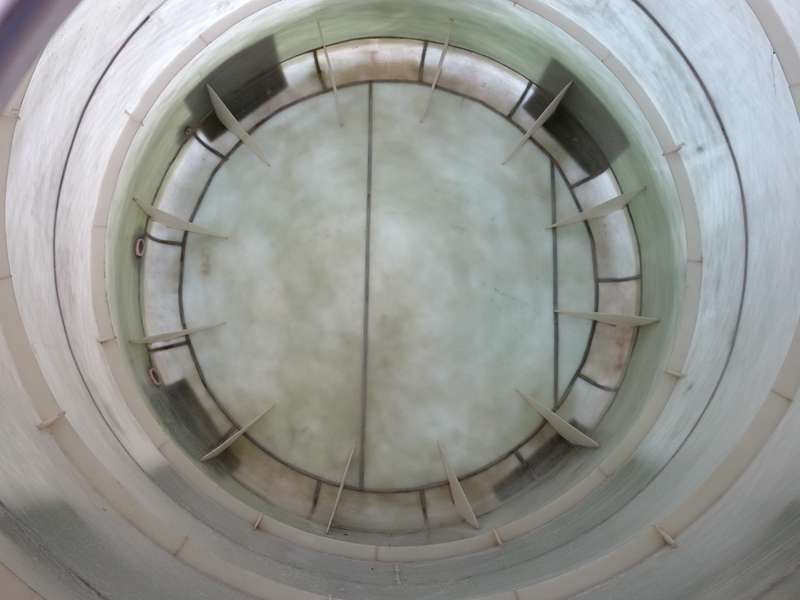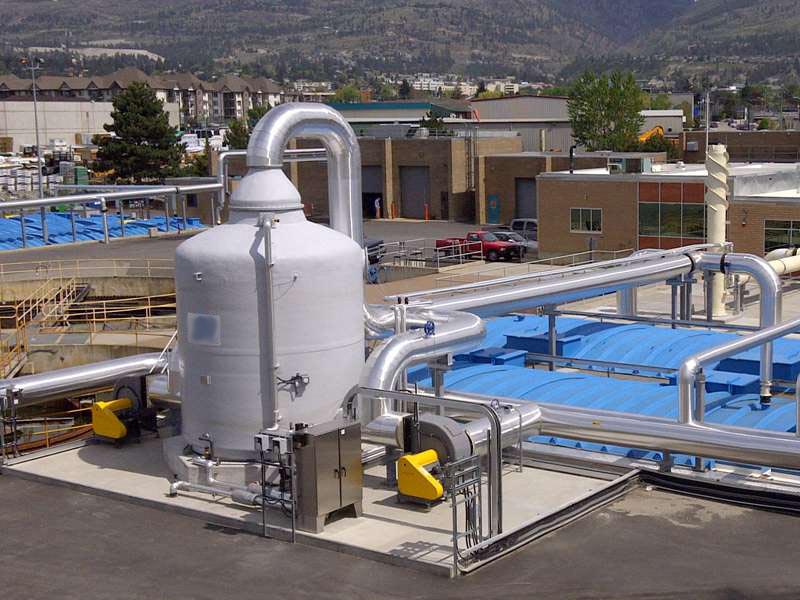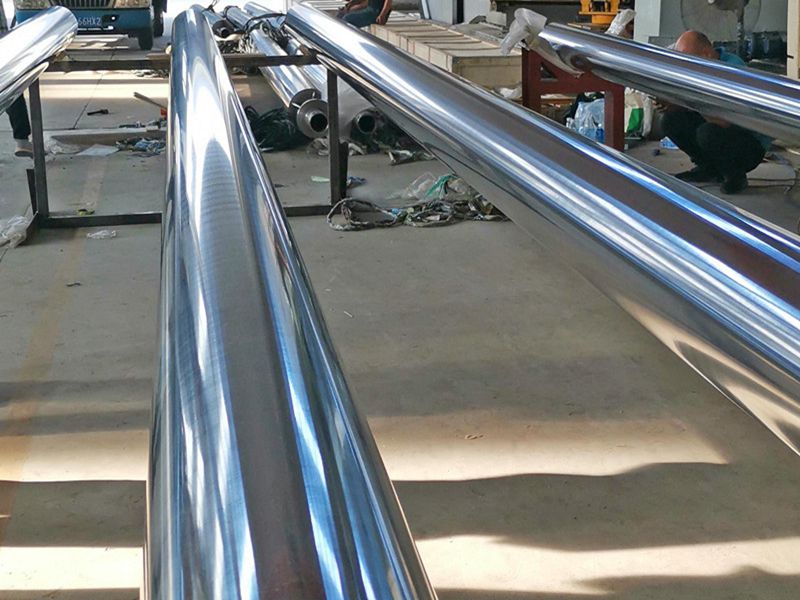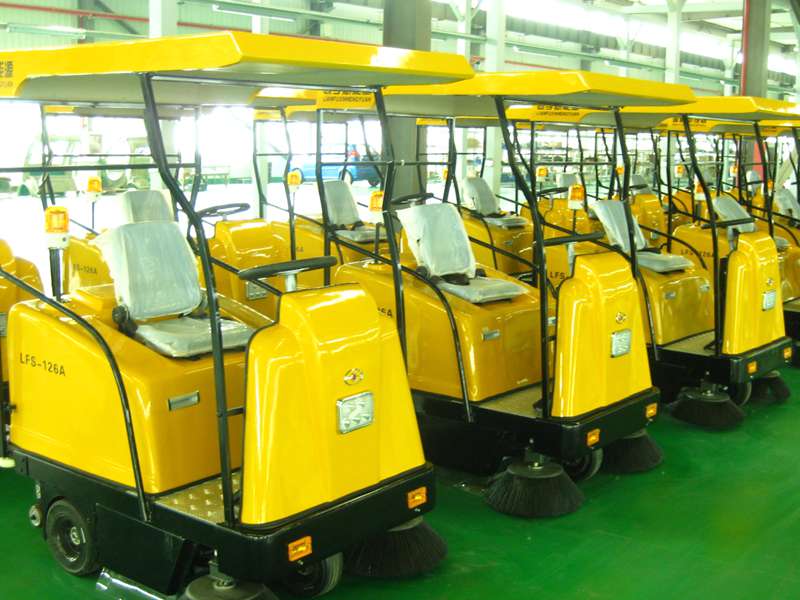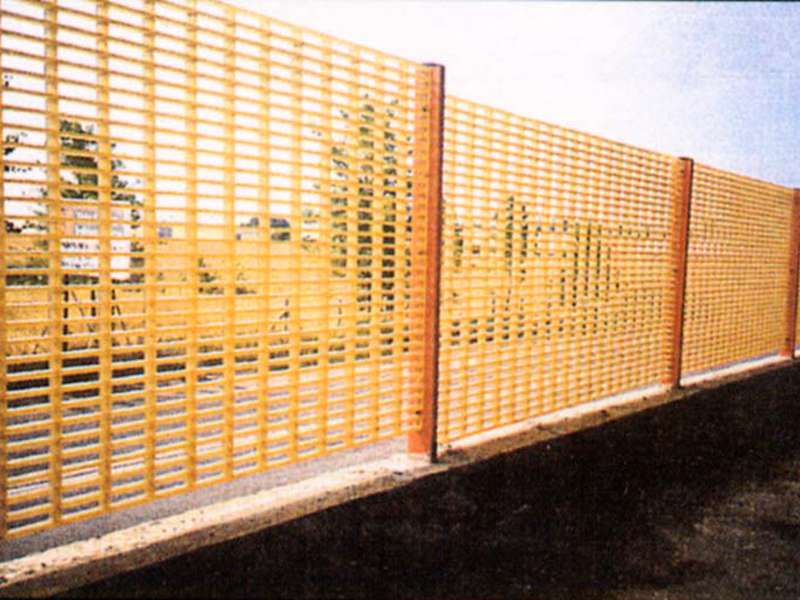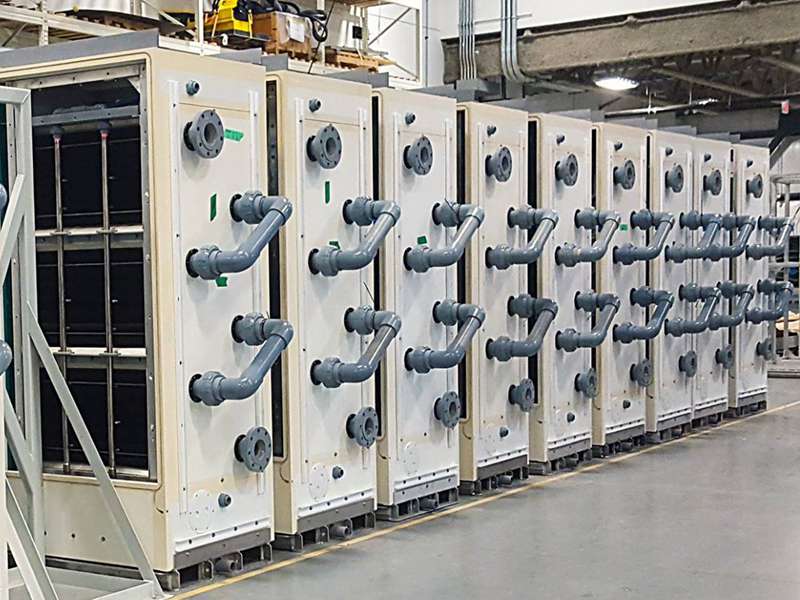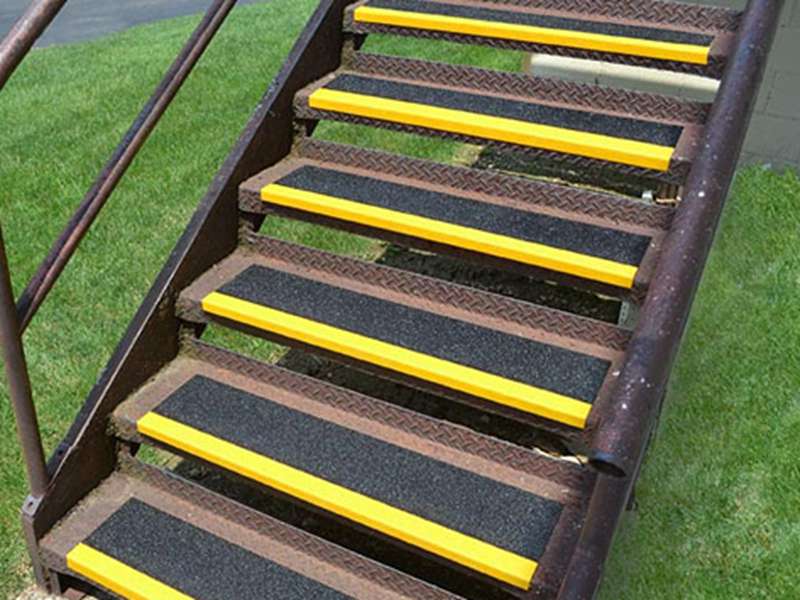
-
 african
african -
 albanez
albanez -
 amharică
amharică -
 arabic
arabic -
 armean
armean -
 Azerbaidjan
Azerbaidjan -
 bască
bască -
 Belarus
Belarus -
 bengaleză
bengaleză -
 Bosniac
Bosniac -
 bulgară
bulgară -
 catalan
catalan -
 Cebuano
Cebuano -
 China
China -
 China (Taiwan)
China (Taiwan) -
 corsicană
corsicană -
 croat
croat -
 ceh
ceh -
 danez
danez -
 olandeză
olandeză -
 Engleză
Engleză -
 esperanto
esperanto -
 estonă
estonă -
 finlandeză
finlandeză -
 limba franceza
limba franceza -
 frizonă
frizonă -
 Galician
Galician -
 georgian
georgian -
 limba germana
limba germana -
 greacă
greacă -
 Gujarati
Gujarati -
 creolul haitian
creolul haitian -
 hausa
hausa -
 hawaian
hawaian -
 ebraică
ebraică -
 nu
nu -
 Miao
Miao -
 maghiară
maghiară -
 islandez
islandez -
 igbo
igbo -
 indoneziană
indoneziană -
 irlandez
irlandez -
 Italiană
Italiană -
 japonez
japonez -
 javaneză
javaneză -
 Kannada
Kannada -
 kazah
kazah -
 Khmer
Khmer -
 ruandez
ruandez -
 coreeană
coreeană -
 kurdă
kurdă -
 Kârgâz
Kârgâz -
 TB
TB -
 latin
latin -
 letonă
letonă -
 lituanian
lituanian -
 luxemburghez
luxemburghez -
 macedonean
macedonean -
 Malgashi
Malgashi -
 Malaeză
Malaeză -
 Malayalam
Malayalam -
 malteză
malteză -
 maori
maori -
 marathi
marathi -
 mongol
mongol -
 Myanmar
Myanmar -
 nepaleză
nepaleză -
 norvegian
norvegian -
 norvegian
norvegian -
 occitană
occitană -
 Pashto
Pashto -
 persană
persană -
 Lustrui
Lustrui -
 portugheză
portugheză -
 punjabi
punjabi -
 Română
Română -
 Rusă
Rusă -
 Samoan
Samoan -
 gaelic scoțian
gaelic scoțian -
 sârb
sârb -
 Engleză
Engleză -
 Shona
Shona -
 Sindhi
Sindhi -
 Sinhala
Sinhala -
 slovacă
slovacă -
 slovenă
slovenă -
 somalez
somalez -
 Spaniolă
Spaniolă -
 Sundaneza
Sundaneza -
 Swahili
Swahili -
 suedez
suedez -
 tagalog
tagalog -
 Tadjik
Tadjik -
 tamil
tamil -
 tătar
tătar -
 Telugu
Telugu -
 thailandez
thailandez -
 turc
turc -
 turkmeni
turkmeni -
 ucrainean
ucrainean -
 Urdu
Urdu -
 Uighur
Uighur -
 uzbec
uzbec -
 vietnamez
vietnamez -
 galeză
galeză -
 Ajutor
Ajutor -
 idiş
idiş -
 Yoruba
Yoruba -
 Zulu
Zulu
Premium Transport Tanks: Secure & Efficient Liquid/Gas Hauling
Introduction to Advanced Fluid Logistics Solutions
In the intricate world of industrial fluid management and transportation, the integrity, efficiency, and safety of containment vessels are paramount. At the forefront of this critical infrastructure are high-performance Tancuri de transport. These specialized units are engineered for the secure, reliable, and often long-distance conveyance of a vast array of liquids, including corrosive chemicals, potable water, industrial effluents, and various process intermediates. Designed to meet stringent regulatory requirements and withstand diverse environmental conditions, modern transport tanks represent a fusion of advanced materials science, precision engineering, and rigorous quality control. They are indispensable assets across petrochemical, water treatment, metallurgical, and agricultural sectors, facilitating uninterrupted supply chains and operational continuity.
The demand for robust and adaptable transport solutions has driven significant innovation in tank design and manufacturing. From lightweight composites offering superior corrosion resistance to intelligent monitoring systems ensuring cargo safety, the evolution of transport tanks reflects an industry-wide commitment to enhancing operational efficiency, reducing environmental impact, and guaranteeing the safe delivery of critical substances. Understanding their technical specifications, manufacturing intricacies, and application versatility is key for B2B decision-makers seeking optimal solutions for their logistics challenges.
Current Industry Trends in Fluid Logistics
The global landscape of fluid logistics is rapidly evolving, driven by several key trends that influence the design, material selection, and deployment of Tancuri de transport. Sustainability is a primary driver, pushing manufacturers towards materials with lower lifecycle environmental impacts and production processes that minimize waste and energy consumption. This includes increased adoption of advanced composite materials like Glass Fiber Reinforced Polymer (GFRP), known for their durability and recyclability.
- Lightweighting: The pursuit of lighter tank designs directly translates to improved fuel efficiency for transport vehicles, reduced emissions, and increased payload capacities. GFRP tanks, being significantly lighter than their steel counterparts, offer substantial advantages in this regard.
- Smart Integration: The integration of Internet of Things (IoT) sensors and telemetry systems is transforming tank monitoring. These systems provide real-time data on fluid levels, temperature, pressure, GPS location, and even leak detection, enhancing safety, preventing losses, and optimizing routing.
- Enhanced Safety Standards: Regulatory bodies globally are continuously updating safety protocols for hazardous material transport. This necessitates tanks with superior structural integrity, advanced spill containment features, and robust testing regimes to comply with standards such as ADR, IMDG, and DOT.
- Material Innovation: Ongoing research into novel composite materials, polymer linings, and anti-corrosion coatings extends the operational lifespan of tanks and broadens their compatibility with increasingly aggressive chemicals.
- Customization and Modularity: As industries diversify, so does the need for highly customized tank solutions. Manufacturers are offering modular designs and flexible fabrication processes to meet specific volume, dimension, and material compatibility requirements, ensuring optimal fit for unique operational contexts.
These trends underscore a shift towards more intelligent, sustainable, and specialized solutions in fluid transport, positioning advanced Tancuri de transport as critical enablers for modern industrial operations.
The Manufacturing Process of Advanced Tancuri de transport
The production of high-quality Tancuri de transport, especially those constructed from Fiber Reinforced Polymer (FRP), involves a sophisticated multi-stage process that prioritizes material integrity, structural strength, and precise adherence to design specifications. This ensures the finished product delivers exceptional performance, durability, and safety across its operational lifespan.
Core Manufacturing Stages:
- Material Selection and Preparation: The process begins with the careful selection of high-grade resins (e.g., Isophthalic Polyester, Vinyl Ester, Novolac Epoxy) tailored to the specific chemical resistance and temperature requirements of the intended cargo. Reinforcing fibers, typically E-glass or corrosion-resistant C-glass, are chosen for their mechanical properties. Resins are precisely mixed with catalysts and additives.
- Liner Fabrication (Corrosion Barrier): A critical step is the construction of an inner corrosion barrier using a resin-rich veil and chop strand mat, often applied via hand lay-up or chop/spray processes. This liner provides the primary chemical resistance and is typically 2.5-5mm thick, forming a seamless, impervious layer.
- Structural Wall Winding (Filament Winding): For cylindrical tanks, the most common method is filament winding. Continuous rovings of fiberglass, impregnated with resin, are precisely wound onto a rotating mandrel at controlled tension and angles. This process builds the structural integrity of the tank wall, offering exceptional hoop and axial strength. Parameters like winding angle, layer thickness, and resin-to-glass ratio are meticulously controlled.
- Dishing and End Cap Attachment: Tank ends (heads) are typically molded separately, often using hand lay-up or contact molding for dished or conical shapes, ensuring adequate strength. These ends are then carefully bonded to the main cylindrical body using reinforced laminate overlays, creating strong, leak-proof joints.
- Fitting and Accessory Integration: Nozzles, manways, lifting lugs, baffles, and other internal/external fittings are accurately positioned and laminated into the tank structure. This stage involves precise drilling, cutting, and meticulous re-laminating to maintain the tank’s overall integrity and chemical resistance at connection points.
- Curing and Post-Curing: After fabrication, the tank undergoes a controlled curing process to achieve full resin polymerization. Some specialized resins may require post-curing in an oven to optimize their chemical and mechanical properties, enhancing durability and service life.
- Quality Control and Testing: Each tank undergoes a rigorous battery of tests to confirm structural integrity, chemical resistance, and leak-proof performance. This includes hydrostatic testing, ultrasonic thickness checks, visual inspections, barcol hardness testing, and potentially acoustic emission testing for critical applications.
Adherence to Industry Standards:
Manufacturing processes strictly comply with international standards such as ASTM D3299 (Filament-Wound FRP Tanks), ASTM D4097 (Contact-Molded FRP Tanks), and ASME RTP-1 (Reinforced Thermoset Plastic Corrosion Resistant Equipment). For European markets, EN 13121 standards are often followed. These standards dictate material specifications, design calculations, fabrication procedures, and testing protocols, ensuring maximum safety and performance.
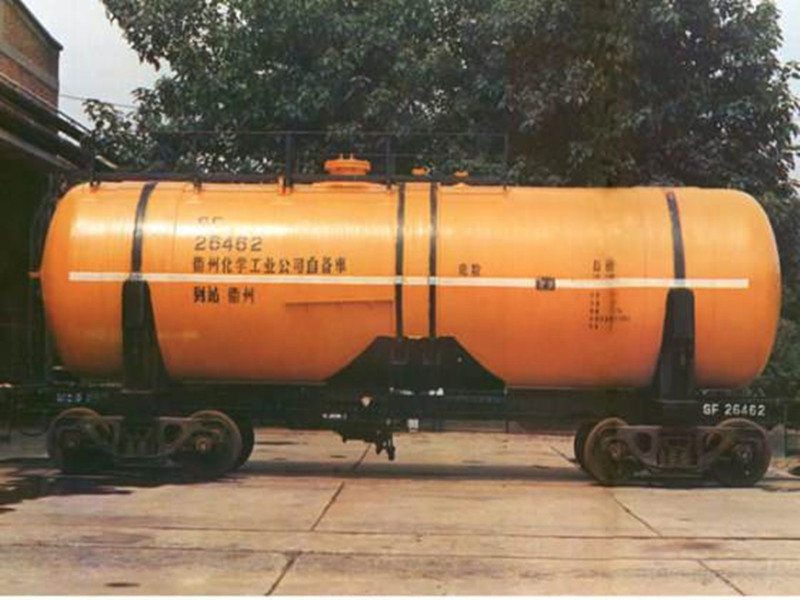
Advantages in Typical Scenarios:
For industries like petrochemicals, metallurgy, and water supply & drainage, these meticulously manufactured tanks offer significant advantages:
- Corrosion Resistance: FRP tanks excel in handling aggressive media like acids, bases, and salts, drastically outperforming metallic tanks and ensuring a service life of 20-50 years even in harsh chemical environments.
- Energy Saving: Their lightweight nature reduces fuel consumption during transportation and simplifies installation, leading to lower operational costs. The superior thermal insulation properties of FRP can also reduce heating/cooling energy costs for temperature-sensitive cargo.
- Maintenance Efficiency: FRP requires minimal maintenance, eliminating common issues like rust, galvanic corrosion, and the need for frequent repainting or lining replacements, which are prevalent with steel tanks.
This rigorous manufacturing and testing regimen, combined with the inherent properties of FRP, positions these Tancuri de transport as a superior choice for demanding industrial applications.
Technical Specifications and Performance Parameters
The performance of Tancuri de transport is critically dependent on their precise technical specifications, which are engineered to ensure safe containment and efficient delivery of various fluid types. Below is a representative table outlining key parameters for typical FRP transport tanks used in industrial applications, reflecting common designs and material capabilities.
Typical FRP Transport Tank Specifications
| Parameter | Value/Description |
|---|---|
| Material of Construction | Fiber Reinforced Polymer (FRP), typically Isophthalic Polyester or Vinyl Ester resin with E-Glass/C-Glass reinforcement. Optional thermoplastic liners (e.g., PP, PVC, PVDF) for enhanced chemical resistance. |
| Capacity Range | 5,000 Liters to 60,000 Liters (1,300 to 15,850 US Gallons), customizable based on application. |
| Operating Pressure | Atmospheric to 3 bar (43.5 psi) for standard designs; higher pressure ratings available upon request with specific structural enhancements. |
| Operating Temperature | -40°C to +120°C (-40°F to +248°F), depending on resin system and thermal insulation. |
| Specific Gravity Rating | Up to 1.9 for standard designs; higher for specialized heavy liquid transport. |
| Design Standards | ASTM D3299, ASTM D4097, ASME RTP-1, BS 4994, EN 13121, ADR/RID compliant for road/rail transport. |
| Service Life | Typically 20-30 years, extending to 50+ years with proper maintenance and suitable chemical compatibility. |
| Fittings & Accessories | FRP nozzles, PVC/PP/PVDF connections, manways, lifting lugs, ladder supports, level indicators, overflow pipes, vents, pressure relief valves, anti-static measures. |
| Thermal Conductivity | Low, typically 0.25-0.35 W/m·K, offering inherent insulation properties superior to steel. |
These detailed specifications underscore the engineered precision behind modern FRP Tancuri de transport, enabling them to meet the rigorous demands of industrial fluid transport with reliability and long-term cost-effectiveness. The selection of specific parameters is always aligned with the client's operational requirements and the chemical nature of the transported media.
Critical Application Scenarios
Tancuri de transport are integral to numerous industries, facilitating the movement of diverse fluids, from raw materials to finished products and waste streams. Their adaptability to various chemical and environmental challenges makes them a preferred choice for critical applications where safety, reliability, and material compatibility are paramount.
- Petrochemical Industry: For the safe transport of corrosive chemicals such as hydrochloric acid (HCl), sulfuric acid (H₂SO₄), sodium hypochlorite (NaOCl), and various solvents. FRP tanks prevent contamination, resist degradation from aggressive chemicals, and ensure worker safety by minimizing leak risks during transit to refineries, chemical plants, or distribution hubs.
- Water & Wastewater Treatment: Used for conveying raw water, treated potable water, wastewater, sludge, and chemical reagents (e.g., ferric chloride, alum) essential for treatment processes. The non-corrosive and non-contaminating nature of FRP ensures water quality and structural longevity in contact with various aquatic media.
- Metallurgy and Mining: In these sectors, tanks are employed for the transport of leaching agents (e.g., cyanides, strong acids), slurries, and process chemicals used in mineral extraction and refining. Their robust construction handles abrasive and corrosive contents common in these heavy industries.
- Food and Beverage Industry: For the hygienic transport of potable water, brines, sugar solutions, and other food-grade liquids. While specific liners are required to meet FDA/food-grade certifications, FRP's inert nature provides a reliable containment solution without metallic contamination.
- Agricultural Sector: Used for delivering liquid fertilizers, pesticides, herbicides, and animal feed supplements. The chemical resistance of FRP tanks is vital for preventing material degradation and ensuring product purity in these agricultural applications.
- Power Generation: Transport of demineralized water, cooling tower chemicals, and effluent streams to and from power plants. FRP tanks’ resistance to a wide range of water treatment chemicals makes them ideal for maintaining plant operational efficiency.
These scenarios highlight the versatility and indispensability of specialized Tancuri de transport in ensuring the safe, efficient, and compliant movement of essential liquids across diverse industrial landscapes.
Key Technical Advantages and Benefits
The selection of advanced materials, particularly Fiber Reinforced Polymer (FRP), for Tancuri de transport provides a distinct suite of technical advantages that translate into significant operational and economic benefits for B2B clients. These advantages extend beyond mere containment, impacting logistics efficiency, safety protocols, and long-term asset value.
- Superior Corrosion Resistance: Unlike metallic tanks susceptible to rust and chemical attack, FRP tanks are inherently resistant to a vast spectrum of corrosive chemicals including strong acids, alkalis, and salts. This eliminates the need for expensive liners or coatings, significantly extending the service life to decades and minimizing downtime for repairs.
- Exceptional Strength-to-Weight Ratio: FRP tanks are substantially lighter than steel tanks of comparable capacity and strength. This 'lightweighting' directly reduces fuel consumption during transit, decreases wear and tear on transport vehicles, and often allows for higher payload capacities within legal weight limits, thus improving logistics efficiency and reducing carbon footprint.
- High Durability and Longevity: Engineered through advanced filament winding techniques, FRP tanks offer excellent mechanical strength, resistance to fatigue, and impact resilience. This robust construction ensures long-term integrity even under continuous vibration and variable road conditions, contributing to a service life often exceeding 25 years.
- Low Maintenance Requirements: The inert nature of FRP negates issues like rusting, pitting, and galvanic corrosion, which plague metallic tanks. This translates to minimal inspection and repair needs, lowering operational expenditures (OpEx) and maximizing uptime without frequent painting or internal liner replacements.
- Thermal Insulation Properties: FRP inherently possesses lower thermal conductivity compared to metals. This provides a natural insulating barrier, helping to maintain the temperature of sensitive cargo during transport, reducing the need for costly external insulation or heating/cooling systems, thereby contributing to energy savings.
- Design Flexibility and Customization: The manufacturing process for FRP allows for a high degree of design flexibility. Tanks can be custom-fabricated to precise dimensions, shapes, and fitting configurations to suit specific vehicle chassis, site constraints, and process requirements, including internal baffles for surge control and various nozzle orientations.
- Cost-Effectiveness: While the initial investment might be comparable or slightly higher than some conventional materials, the long-term total cost of ownership (TCO) for FRP Tancuri de transport is significantly lower due to reduced maintenance, extended service life, improved fuel efficiency, and superior cargo protection.
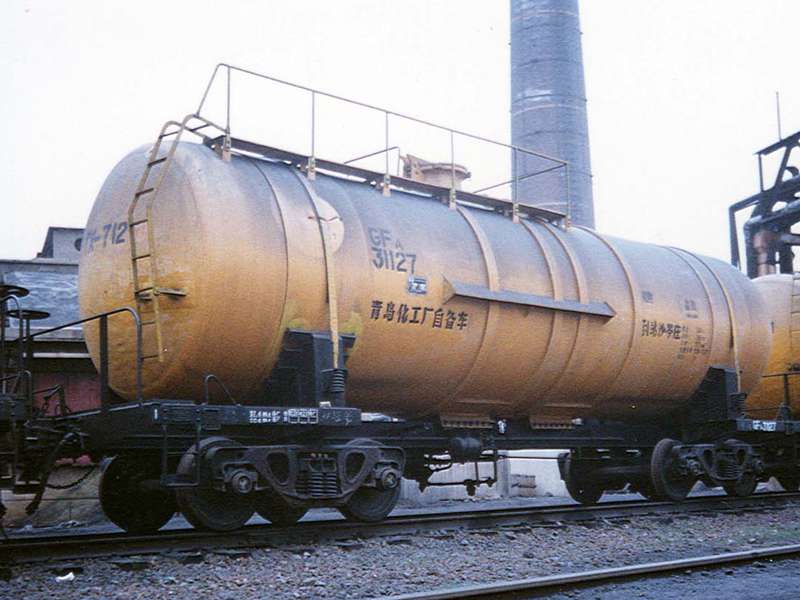
These technical advantages position FRP Tancuri de transport as a strategic investment for industries seeking to optimize their fluid logistics, enhance safety, and achieve long-term operational sustainability.
Vendor Capability and Customization Excellence
Selecting a proficient vendor for Tancuri de transport is crucial. A leading provider distinguishes itself not only through product quality but also through comprehensive engineering support, adherence to international standards, and the ability to deliver highly customized solutions. This section outlines key aspects to consider when evaluating vendors and highlights the importance of tailored manufacturing.
Key Vendor Differentiators:
| Feature/Service | Standard Vendor | Leading Manufacturer (e.g., JRAIN-FRP) |
|---|---|---|
| Material Expertise | Limited resin options; basic reinforcement. | Broad portfolio of resins (Isophthalic, Vinyl Ester, Novolac), specialized additives, custom laminate schedules for specific chemicals and temperatures. |
| Design & Engineering | Standardized designs; limited ability for complex geometry. | FEA-backed designs, 3D modeling, full compliance with ASME RTP-1, BS 4994, EN 13121, ADR/RID; optimized structural integrity. |
| Manufacturing Process | Basic hand lay-up or simple filament winding. | Automated, multi-axis filament winding, precise resin impregnation, controlled curing, skilled laminate technicians for complex sections. |
| Quality Assurance | Basic visual checks, limited testing. | ISO 9001 certified, comprehensive NDT (hydrostatic, acoustic emission, ultrasonic), raw material traceability, documented process controls. |
| Customization Options | Minimal, standard sizes and fittings only. | Fully bespoke dimensions, capacity, internal baffles, specific nozzle configurations, integral heating/cooling coils, insulation, anti-static layers, sensor integration. |
| Project Support | Transactional. | Dedicated project management, engineering consultation from concept to commissioning, after-sales support, installation guidance. |
Customized Solutions for Unique Challenges:
True excellence in Tancuri de transport lies in the ability to deliver solutions precisely tailored to an client's specific operational context. This often includes:
- Specific Chemical Compatibility: Engineering the optimal resin and reinforcement combination to safely contain highly aggressive or temperature-sensitive chemicals not covered by standard designs.
- Chassis Integration: Designing tank dimensions and mounting points to seamlessly integrate with specific truck chassis or rail car requirements, optimizing load distribution and compliance.
- Operational Environment Adaptations: Incorporating features for extreme temperatures, high altitude, seismic zones, or abrasive environments. This might involve specialized UV protection, enhanced structural supports, or particular external coatings.
- Integration of Advanced Systems: Pre-fitting with specific fluid management systems, IoT sensors for real-time monitoring, specialized loading/unloading mechanisms, and advanced safety interlocks.
- Regulatory Compliance: Navigating complex local and international transport regulations (e.g., DOT, ADR, IMDG, RID) to ensure every customized tank meets all legal requirements for its intended route and cargo.
A vendor's commitment to customized solutions, backed by robust engineering and quality control, ensures that clients receive not just a tank, but a perfectly integrated, high-performance fluid transport asset.
Real-World Application Case Studies
The practical utility and performance of modern Tancuri de transport are best illustrated through their successful deployment in challenging industrial environments. These case studies highlight their reliability, safety, and economic advantages over conventional solutions.
Case Study 1: Hazardous Chemical Transport for a Global Petrochemical Conglomerate
A major petrochemical company operating across multiple continents faced significant challenges in transporting concentrated hydrochloric acid (32% HCl) and sodium hypochlorite (15% NaOCl) between its manufacturing facilities and distribution centers. Traditional steel tanks, even with specialized linings, experienced frequent corrosion issues, leading to costly maintenance, premature replacements, and potential environmental risks due to leaks.
Solution Implemented: The company transitioned to a fleet of 25,000-liter FRP Tancuri de transport constructed with a Vinyl Ester resin system. These tanks were specifically designed with a reinforced corrosion barrier and integral baffles to manage fluid dynamics during transit. Each tank was also fitted with advanced telemetry for real-time pressure, temperature, and GPS monitoring.
Results Achieved:
- Corrosion Elimination: After five years of continuous service, the FRP tanks showed no signs of internal corrosion, drastically extending service life compared to the 2-3 years experienced with lined steel tanks.
- Maintenance Cost Reduction: Annual maintenance costs for the tank fleet dropped by an estimated 70%, primarily due to the elimination of relining and rust remediation.
- Enhanced Safety & Compliance: The robust, leak-proof design and real-time monitoring significantly improved safety records and ensured full compliance with international hazardous materials transport regulations (ADR/RID).
- Operational Efficiency: The lighter weight of FRP tanks allowed for increased payload per journey, reducing the number of required trips and fuel consumption by approximately 12%.
Case Study 2: Potable Water Distribution in Arid Regions
A municipal water authority in an arid region needed a robust solution for transporting potable water to remote communities. The primary concerns were ensuring water purity, preventing external contamination, and maintaining structural integrity under harsh environmental conditions including intense UV radiation and temperature fluctuations. Metallic tanks posed risks of rust contamination and were heavy, increasing transport costs.
Solution Implemented: The authority procured a series of 15,000-liter FRP Tancuri de transport designed specifically for potable water. These tanks featured an FDA-compliant internal gel coat, UV-stabilized exterior resin, and reinforced insulation layers. Each tank was mounted on custom-fabricated skids for easy deployment and secure transport over rough terrain.
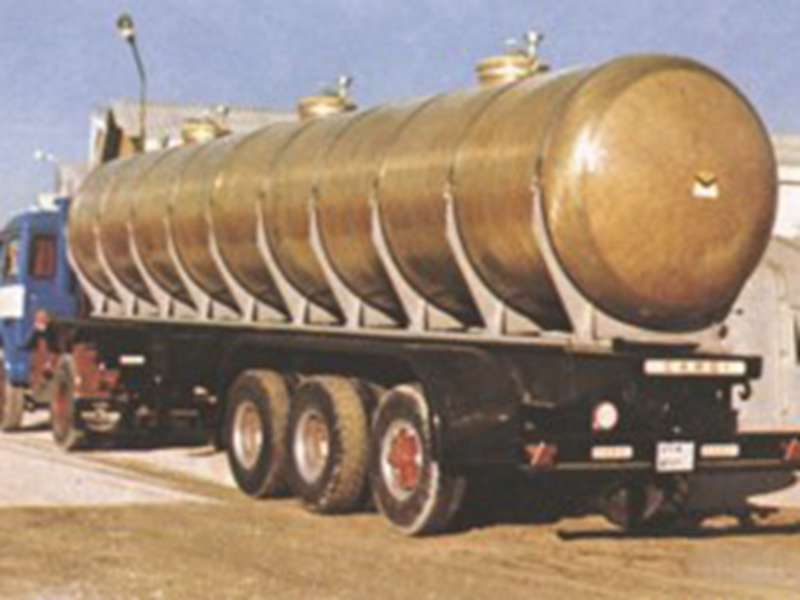
Results Achieved:
- Guaranteed Water Purity: The inert FRP material with its food-grade liner ensured no leaching or contamination of the potable water, consistently meeting national water quality standards.
- Extended Durability: The UV-resistant exterior and robust construction demonstrated no degradation or structural fatigue despite exposure to extreme solar radiation and dusty environments, ensuring a projected service life of over 30 years.
- Logistics Optimization: The lightweight nature of the FRP tanks, combined with optimized skids, allowed for easier transport and quicker deployment in challenging remote locations, improving the efficiency of water supply operations.
- Reduced Operating Costs: Minimized maintenance and fewer incidences of material failure resulted in substantial savings compared to previous solutions.
These instances demonstrate how high-performance FRP Tancuri de transport provide critical infrastructure solutions that are not only technically superior but also offer substantial economic and environmental benefits across diverse industrial applications.
Ensuring Trust: FAQs, Lead Times, and Support
Building and maintaining trust with B2B clients is foundational, particularly for mission-critical equipment like Tancuri de transport. This section addresses common inquiries, provides clarity on logistical aspects, and outlines robust support mechanisms.
Frequently Asked Questions (FAQs)
- Q1: What types of chemicals can FRP Transport Tanks safely carry?
- A1: FRP tanks are highly versatile and can safely transport a wide array of corrosive and non-corrosive liquids, including concentrated acids (hydrochloric, sulfuric, nitric), alkalis (sodium hydroxide), sodium hypochlorite, brines, wastewater, demineralized water, and various industrial solvents. Specific resin systems (e.g., Isophthalic, Vinyl Ester, Novolac) are selected based on the chemical compatibility requirements of the cargo, often supported by a chemical resistance guide or expert consultation.
- Q2: How do FRP tanks compare to stainless steel or carbon steel tanks in terms of service life and maintenance?
- A2: FRP Tancuri de transport typically offer a longer service life (20-50+ years) when handling corrosive chemicals compared to steel tanks, which often require frequent internal lining replacements and external painting due to corrosion. FRP tanks require minimal maintenance, eliminating common issues like rust and galvanic corrosion, leading to significantly lower long-term operating costs and less downtime.
- Q3: Are FRP Transport Tanks compliant with international transport regulations?
- A3: Yes, our FRP Tancuri de transport are designed and manufactured to meet or exceed relevant international and national transport standards, including ADR (European Agreement concerning the International Carriage of Dangerous Goods by Road), RID (Regulations concerning the International Carriage of Dangerous Goods by Rail), IMDG Code (International Maritime Dangerous Goods), and DOT (U.S. Department of Transportation) regulations. Compliance is verified through rigorous testing and certification processes.
- Q4: Can these tanks be customized for specific vehicle chassis or operational requirements?
- A4: Absolutely. Customization is a core strength. We work closely with clients to engineer tanks to specific dimensions, capacities, and fitting arrangements to perfectly integrate with truck chassis, rail cars, or existing site infrastructure. This includes custom nozzle placement, manway configurations, internal baffles for surge control, and insulation for temperature-sensitive cargo.
Lead Time and Fulfillment Details
Our streamlined manufacturing processes and robust supply chain management enable efficient order fulfillment.
- Standard Products: For standard configurations of FRP Tancuri de transport, typical lead times range from 8 to 12 weeks from order confirmation to ex-works delivery, depending on current production schedules.
- Customized Solutions: Custom-engineered tanks may require longer lead times, usually between 12 and 18 weeks, to accommodate detailed design, engineering review, material sourcing for specialized resins, and extensive fabrication. A precise timeline will be provided upon finalization of technical specifications.
- Expedited Options: In urgent cases, expedited manufacturing and delivery options may be available for an additional charge. Please consult with our sales team for feasibility and pricing.
- Logistics: We assist with arranging global shipping and transport logistics, ensuring tanks are delivered safely and efficiently to your specified location, including necessary documentation for customs and import.
Warranty Commitments
We stand by the quality and durability of our Tancuri de transport with comprehensive warranty coverage:
- Standard Warranty: All new FRP transport tanks come with a standard 1-year warranty covering material defects and manufacturing workmanship from the date of delivery.
- Extended Warranty: Extended warranty options are available for up to 3 years, offering additional peace of mind for critical applications. Please inquire for details.
- Performance Guarantee: Our warranty ensures that tanks will perform as per agreed-upon specifications and design parameters, subject to proper installation, operation, and maintenance as outlined in our user manual.
Customer Support Information
Our commitment extends beyond delivery. We provide robust after-sales support to ensure the long-term success of your operations.
- Technical Assistance: Our team of experienced engineers is available for technical consultations, troubleshooting, and advice on operation and maintenance. Support is accessible via phone and email during business hours.
- Spare Parts: We maintain a comprehensive inventory of standard spare parts and can fabricate custom components as needed, ensuring minimal downtime for any required repairs or upgrades.
- On-site Support: For complex issues or specific installation requirements, on-site technical support can be arranged globally, subject to agreement.
- Documentation: Comprehensive documentation, including operation manuals, maintenance guides, and material certifications, is provided with every tank.
Our dedication to quality, transparency, and ongoing support reinforces the trustworthiness and long-term value of partnering with us for your industrial Tancuri de transport needs.
Conclusion
The selection of appropriate Tancuri de transport is a critical decision for any B2B operation involved in fluid logistics. Modern FRP solutions offer an unparalleled combination of corrosion resistance, lightweight design, durability, and cost-effectiveness that significantly outperforms traditional materials in demanding applications. By adhering to rigorous manufacturing standards and offering extensive customization capabilities, leading manufacturers ensure that these specialized tanks not only meet but exceed the complex demands of industries ranging from petrochemicals to water treatment.
The investment in high-quality Tancuri de transport translates directly into enhanced operational safety, reduced maintenance burdens, improved logistical efficiency, and a demonstrable commitment to environmental responsibility. As industries continue to evolve, the adaptability and advanced engineering of these containment solutions will remain pivotal in supporting global supply chains and facilitating the safe movement of essential industrial fluids.
References
- ASTM International. (2020). ASTM D3299/D3299M-20: Standard Specification for Filament-Wound Fiberglass (Glass-Fiber-Reinforced Thermosetting-Resin) Pressure Vessels. Retrieved from www.astm.org
- ASME. (2019). ASME RTP-1: Reinforced Thermoset Plastic Corrosion Resistant Equipment. Retrieved from www.asme.org
- European Standard. (2018). EN 13121-3: GRP tanks and vessels for use above ground - Part 3: Design and workmanship. Retrieved from www.cen.eu
- Fiberglass Reinforced Plastics Institute. (n.d.). Advantages of FRP Composites. Retrieved from www.frpi.org
- Corrosionpedia. (n.d.). Understanding FRP (Fiber Reinforced Polymer) and its use in industrial applications. Retrieved from www.corrosionpedia.com
Cele mai recente știri
-
Premium Transport Tanks: Secure & Efficient Liquid/Gas HaulingȘtiriAug.30,2025
-
Dual Laminate Products: Superior Corrosion & Chemical ResistanceȘtiriAug.29,2025
-
Rectangular Tanks: Durable, Custom-Sized Storage SolutionsȘtiriAug.28,2025
-
Fiberglass Duct Our Commitment to Quality719ȘtiriAug.22,2025
-
Fiberglass Duct Our Commitment to QualityȘtiriAug.20,2025
-
FRP Winding Machine with Precision WindingȘtiriAug.20,2025


